Nokia Lumia 735 Review
by Brett Howse on February 3, 2015 6:00 AM EST- Posted in
- Smartphones
- Microsoft
- Nokia
- Lumia
CPU Performance
This is the third Lumia smartphone that I have reviewed in the past year with the same SoC inside, so there should be no surprises as far as performance. The 1 GB of RAM is important, as some Windows Store apps are only available to devices with at least 1 GB of memory. The Snapdragon 400 MSM8926 provides plenty of power for navigating the OS, but lacks the grunt of devices like the Lumia 930 and HTC One M8. It is more forgivable in a device at this price point than the Lumia 830, even though there are other devices that may have higher specification SoCs for at or around this price point.
As this is the third device we have tested with the same SoC, there is not much to discuss about performance, but if you would like to compare this device to any other phone we have tested, you can use our online benchmark comparison database, Bench.
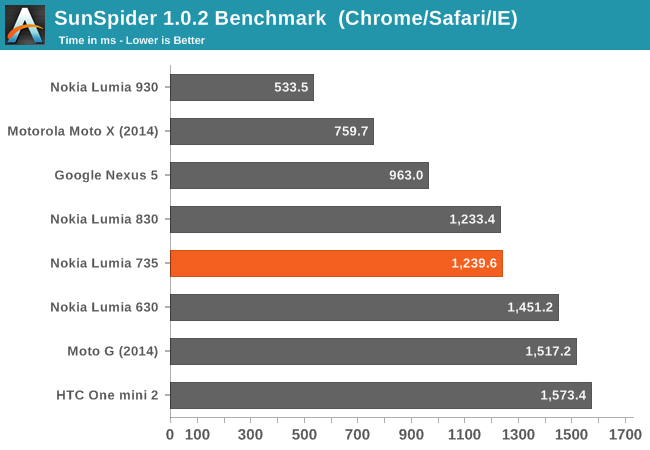
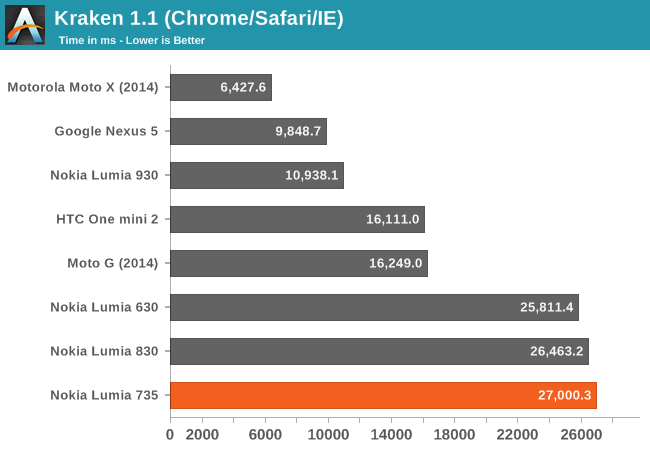
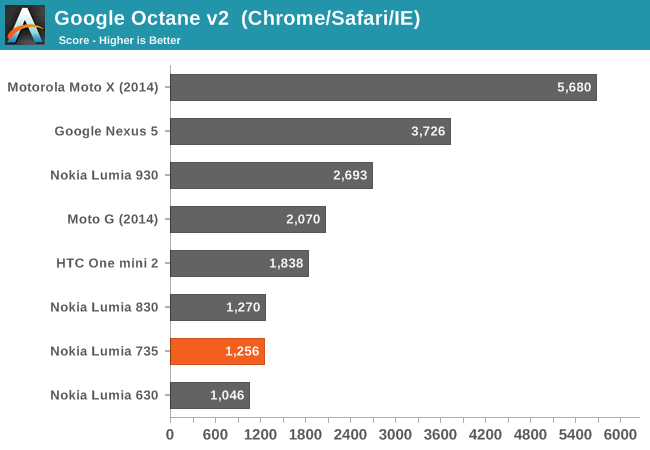
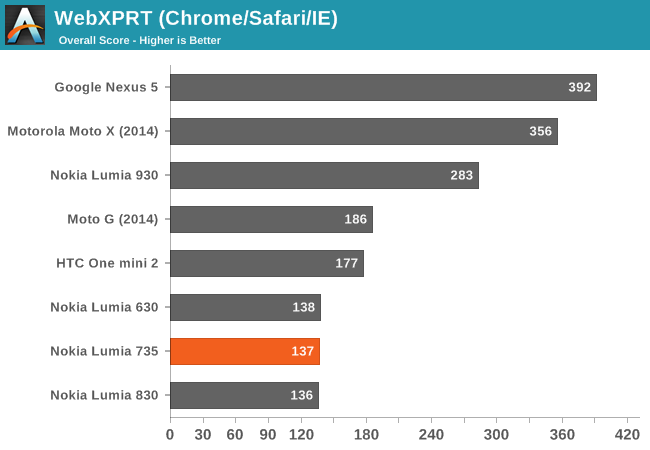
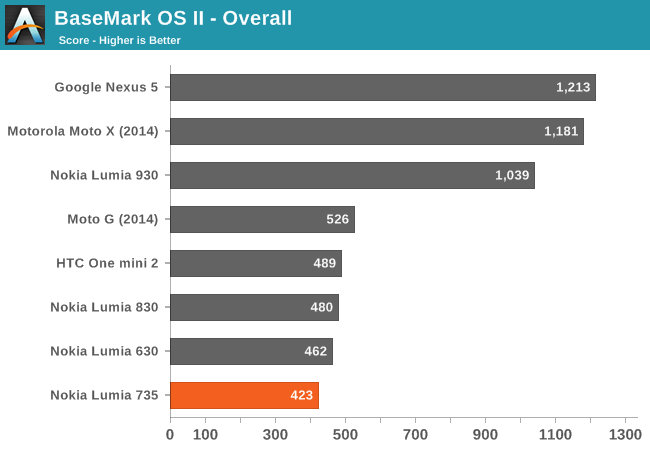


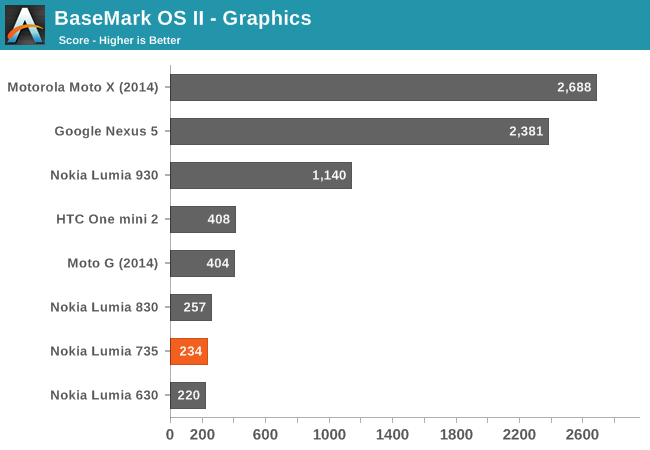

Quad-core Cortex A7 is not going to light the world on fire, and the Lumia 735 performs very similarly to the Lumia 630 and 830 that we have tested previously.
GPU Performance
Although the GPU powering the Lumia 735 is the same as the 630 and 830, we can now compare the Adreno 305 graphics in Windows Phone with the same GFXBench version as is available on iOS and Android. Kishonti, who are the developers of GFXBench, recently updated the Windows Phone version to 3.0.4, up from the old version 2.7. BaseMark X 1.1 is our other GPU benchmark for mobile phones, but it would not launch on this phone, and seems to have some compatibility issues with Windows Phone as I have seen this before with the Lumia 930. Performance should be the same as the Lumia 830 for BaseMark X 1.1.
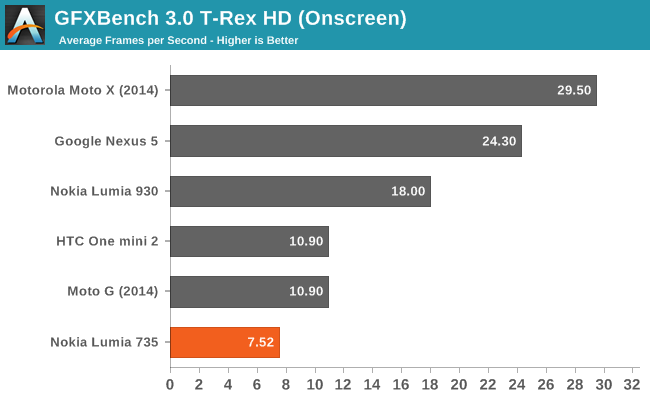


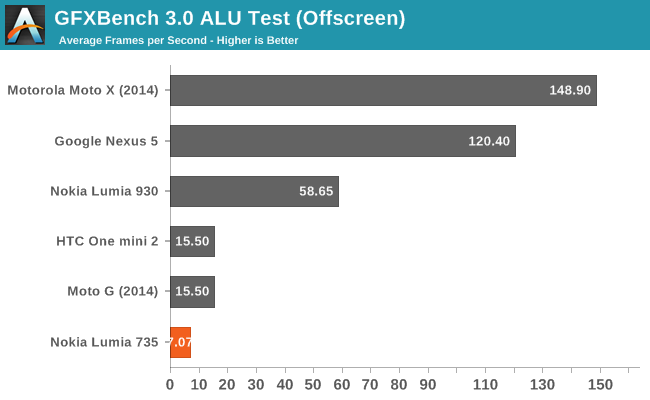
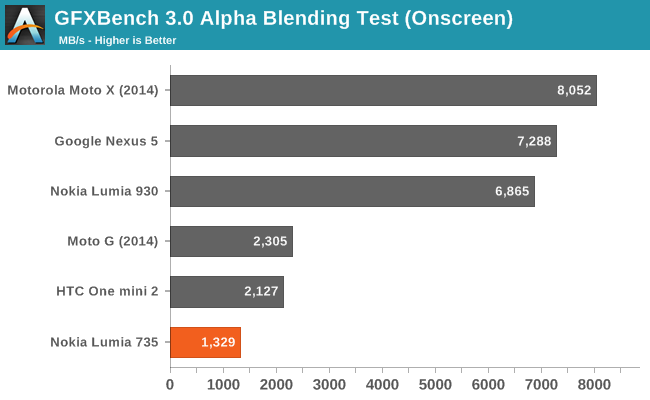
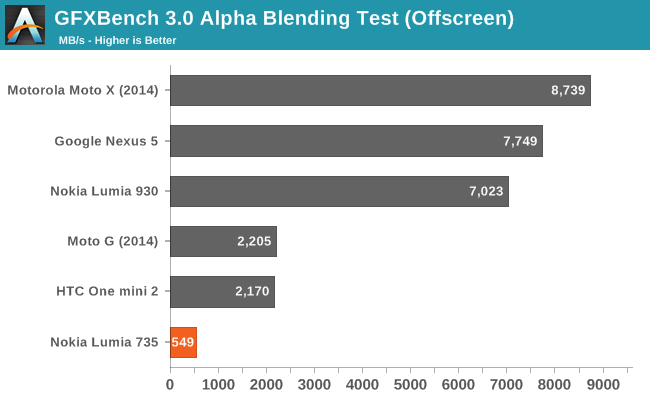
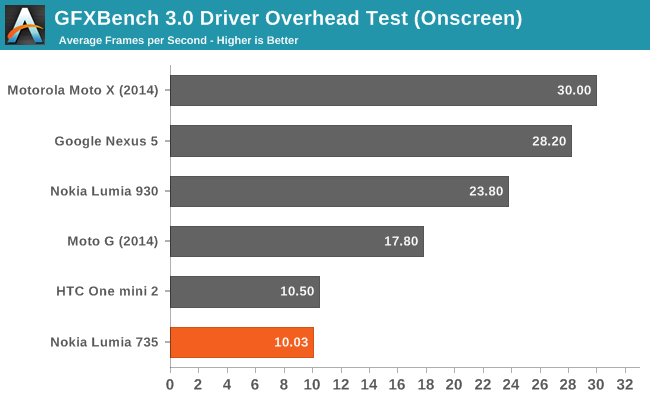
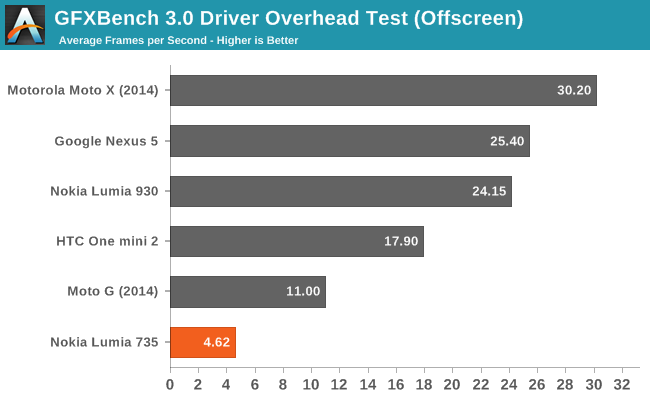
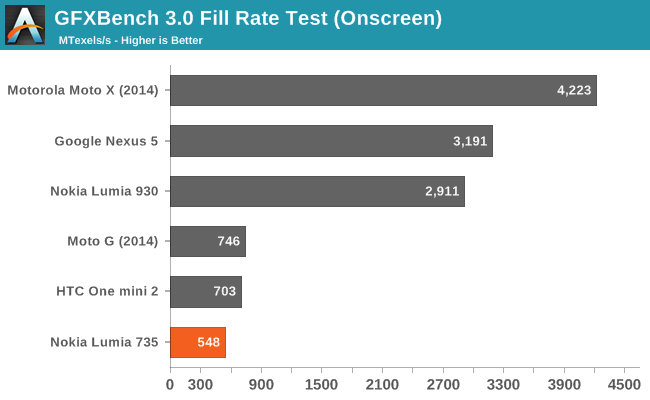
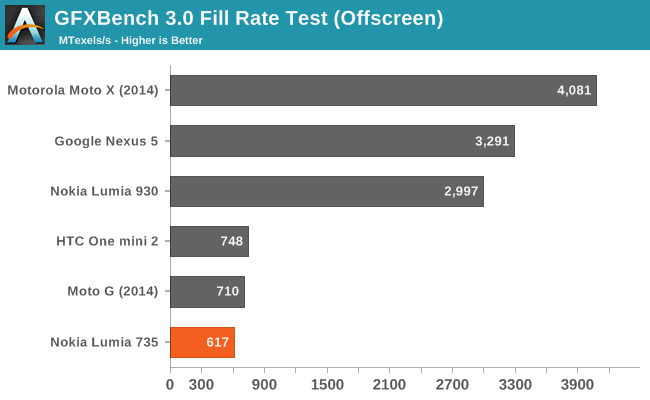
Having GFXBench 3.0 now on the platform, we can now analyse the performance degradation over time.
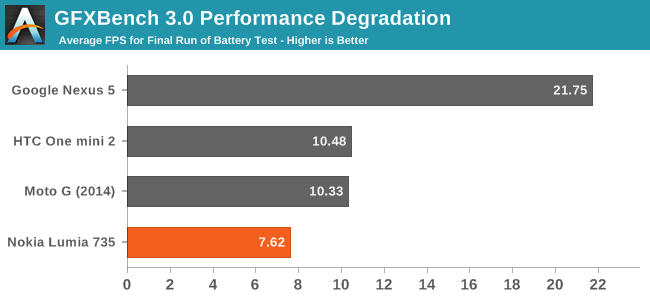
There is no throttling at all on the Lumia 735, with the first and last set of runs for GFXBench at exactly the same frames per second.
Compared to the Snapdragon 800, performance is not even close, but with the pricing of the Lumia 735, and other advantages of the Snapdragon 400 such as battery life, the performance is not too bad for basic apps. The Lumia 930 can open apps quite a bit quicker, but with Windows Phone, animations are always smooth and fluid.










64 Comments
View All Comments
gijames1225 - Tuesday, February 3, 2015 - link
What's the rationale for when to include and when not to include iPhones in the comparisons? No iPhone was compared in the battery life charts, but it's there in a lot of the other charts.melgross - Tuesday, February 3, 2015 - link
Particularly as it was said that the testing app is now compatable across systems.Brett Howse - Tuesday, February 3, 2015 - link
We pull our data from our online database, and the iPhone would not be included if that particular test was not run on it. GFXBench just updated to this version recently on iOS (by recently I mean since our initial review)gijames1225 - Tuesday, February 3, 2015 - link
Cool, thanks for the explanation.hlovatt - Tuesday, February 3, 2015 - link
There was some comparison against iPhone5c, but inconsistent and missing for performance. So the review was a bit disappointing overall :(Brett Howse - Tuesday, February 3, 2015 - link
Our benchmarks evolve over time, and as new versions come out, we migrate towards them. The 5c was reviewed a while ago, so it would not have been run on benchmarks that came out after its launch, but price wise is still similar to the 735 so I included it where I could. If you want to compare the 735 to any other iPhones, I mentioned in the article that we have a great online tool for that called Bench which you can find a link to at the top of our main page.hlovatt - Tuesday, February 3, 2015 - link
Thanks for your reply. Pity that the newer benchmarks are not available for 5C. I guess that provided that the benchmarks don't continually change this won't be a common problem. Pity in this case, but thanks again for the reply.bullzz - Tuesday, February 3, 2015 - link
@Brett - Great review. in some CPU and GPU benchmarks why does 735 perform 10-30% slower than Moto G. I thought they were using the same socI don't know why anyone would buy this or 830 over Moto G LTE. better performance, better display, better OS. Only upside is battery life but I think MotoG has much better value to it
Daniel Egger - Tuesday, February 3, 2015 - link
Because people typically buy phones for the full package rather than just plain hardware specs? Otherwise neither Motorola nor Microsoft nor Apple would sell any phones...Brett Howse - Tuesday, February 3, 2015 - link
Yes, they are the same SoC. Snapdragon 400 in both. In the web browser tests, Internet Explorer is much slower than Chrome. IE is being replaced though, and the new replacement is already much faster, so on Windows 10, this should be less of an issue.As for the GPU benchmarks, my suspicion is that the video drivers for Adreno are more tuned for Android than they are for Windows Phone with DirectX.